Interview Patrick Kasingsing
Images World Architecture Festival
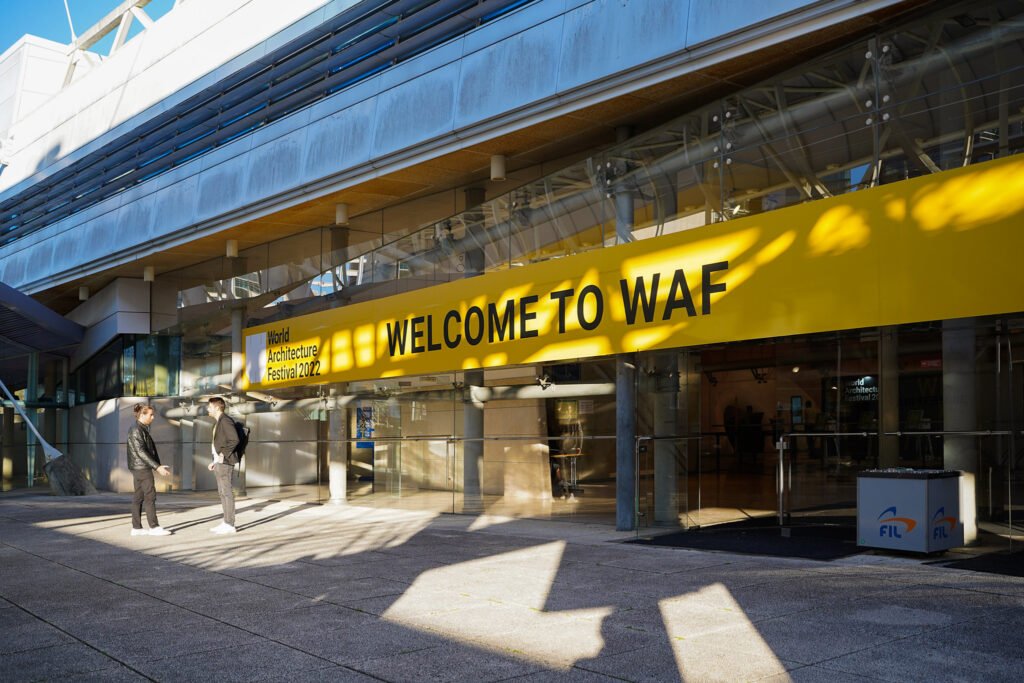

Mr. Finch, welcome to Kanto. I will jump straight to the point: Will there be any major changes that we can expect in the 2023 edition of the World Architecture Festival? (WAF)?
Paul Finch, program director, World Architecture Festival: I do not think there will be major changes, except that we expect a significant number of Chinese delegates who could not come to Lisbon because of COVID and travel restrictions. So, although we got quite a good number of award entries from Chinese architects, it wasn’t as big or a significant proportion of entries as it had been in the last time we did a live event in 2019. So, you know, we think that that will make a difference, but the format and the basic ideas will be the same. Of course, we have a different theme this year for our thematic conference, which is called Catalyst. Whereas last year, it was called Together because we were together again after COVID. But the basic format of the World Architecture Festival, which is based around the awards program, we will not change that, because it’s successful.
Last year, WAF was finally held live in Lisbon. For this year’s edition, your team decided to move to back to Singapore, WAF’s base for the 2012-2015 editions. Why the move back to the Lion City this 2023? Were other Asian countries or regions considered? What are the factors that determine where WAF is going to be located?
Well, if we go back to the beginning of WAF, we decided to go to Barcelona where we stayed for four years. Because we did a big survey of architectural bases, and Barcelona came out top. Actually, London came out extremely well also. But because we are based in London, we do not want to do a global event in London. We are based in London, it is too…parochial. So we went to Barcelona. And we left Barcelona, because we felt at the time that things in Europe were getting a bit tired. The third and fourth years of WAF…work was successful, but they were sort of flat in terms of the numbers of entries and delegates. And that is when we thought that we should go east. And we did a fair bit of research on that.
We certainly looked at Hong Kong, that was an obvious one. We thought about China, but at the time, we thought that if we were going to China, I was better off going to Hong Kong. But Singapore was quite an easy decision to make. Because first, I knew Singapore; I had been a judge on the President’s Design Awards (PDA). We had a connection with the Urban Redevelopment Authority. We know people at the DesignSingapore Council…so Singapore is not unknown to us.
Secondly, we were very impressed by the fact that with things like the PDA, clearly, the Singapore government was interested in promoting design as part of the general move to encourage creative industries and creative professions. So, we thought that was appropriate. And finally, Singapore is an easy place to do business and is very straightforward. It has legal systems, we understand. And it is an efficient country.
Moving back to your question. The reason we have come back to Singapore is, having spent seven years in Europe, including two years where we were not able to stage a live event, and last year’s successful Lisbon edition, we thought it was time for a move again to refresh and recharge. And I suppose because of the political situation in relation to Hong Kong, we did not have to think too hard about coming back to Singapore.
I should say that, of course, there are other parts of Asia and Australasia where we would love to stage our event, but we must consider the extreme difficulties for some people traveling. Now, wherever you go in the world is going to be difficult for somebody. But it becomes more difficult in certain locations, whereas a huge proportion of the global population can get to Singapore pretty quickly. It is not good for America. But you know, Americans have been very faithful in entering the awards and attending actually, in the four years we were here, so it’s not too much of a gamble we hope!
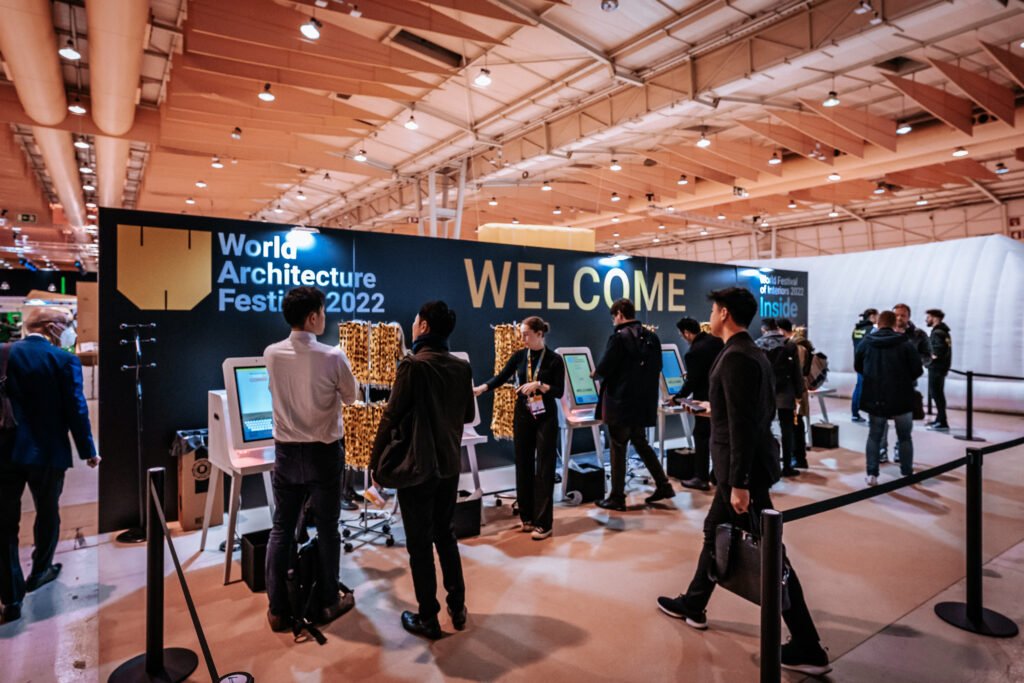

When we announced that the festival was going to be held again in Singapore, several local architects we knew who were not considering joining WAF were suddenly interested. That is why you’ll hear some of their questions in a bit.
Okay, so for the 15 years that WAF has been up, how has the competition’s goals and vision, beyond being a business, changed or evolved?
Well, it was not launched as a commercial idea originally, although, because we work for a commercial media company, quite clearly, we were not going to be able to launch it unless there were chances of commercial success. But the idea of it was more driven by a belief in promoting higher standards of architecture and the importance of architecture in the world generally. And that came about when I was still editing the Architectural Review, an international architectural magazine. Again, its main concern was architecture, of course, we have to make money. But you know, that is a necessary condition.
And when we launched the festival, the key thing for us was, how can we make it different? It could not just be a conference. Because there are already plenty of international conferences all the time. And we looked at models, for example, real estate events like Cityscape, in Dubai, or MIPIM in France, where you do get architects, but the architects are like, bit players in a film rather than the stars.
Because we were architectural publishers, why isn’t there a global event, where architects are the main players? When we did our research, we could not find any such event. The only events we found where you had a global scale were usually typology-based, about one building type. There are waterfront buildings, tall buildings…or events that were about one material, like concrete or timber, or steel.
What we wanted to do was to show the entire range of what architecture and design can deliver, where anyone could enter, you did not have to get chosen, like, say, the Venice Biennale. We wanted to create a festival where any architect in the world where any project, small, big, expensive, cheap, could compete on sort of equal terms, right?
With the awards, which we then tie with our conference programs, we intend to create a situation where architects, interior designers, and allied professionals can discuss the things they think really matter to them, in a context where it is one of a kind, one that fosters constructive criticism, right? Because at the end of the day, there is still a whole load of competing going on as a contest, but it is not vicious. It is sort of semi-collaborative.
Here is a phrase I like to use… we wanted to create an event where the architects would focus on the craft, from where architects could remind themselves why they fell in love with architecture in the first place. I think and hope that is the spirit that we have created and continue to create.
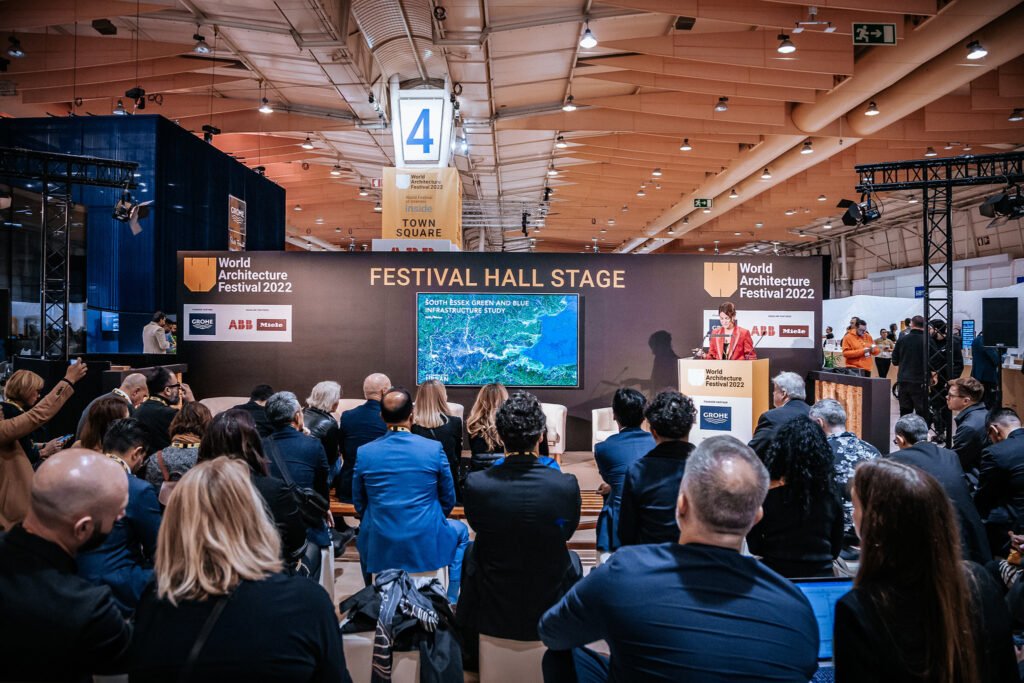

Okay, great. So, these are some of the questions that Pinoy architects sent us to ask you.
How is WAF helping developing countries draw architectural talent who may not have the financial resources or, you know, young studios who feel like they have a project that’s compelling enough to join the WAF? Are there plans for reduced fees for smaller practices or less costly options available, for example, if you want to be a delegate, you can opt to pay in installments?
Well, we look at this every year and discuss it. And for all event organizers. It is difficult territory, you know, like, how do you distinguish between a very rich, small, firm, and starting one?
My advice to younger practices, if they think they have got something they really want to enter, get the client to pay for it, or ask the clients to make a contribution. A lot of clients are very, very proud of their buildings. And most of the time, they will not mind if the architect says, “Look, we really like to enter this competition, it’s a bit expensive, will you pay 50% of it? Or can you pay for all of it? We say to all the shortlisted architects, if they bring a client, if they have booked their two tickets for the presentation and they want to bring a client as well, we will give them a free pass. We also have very reduced rates for students. We have various discounts during the course of the year. We have discounts for the locals wherever the festival is.
Also, if you are doing a live event, you know, supposing we get 3,000 entries and we have to shortlist this to 1,500 then the number of rooms we need goes up, the amount of floor space we need goes up, our costs go up like that, and we end up potentially losing money. It is just a fact that when you do these big international events, they tend to be more expensive than small local ones. And we, I think, over a period of time, would hope to get to a position where we might be able to have differential rates for different parts of the world.
Okay, you sort of answered this a while ago, but just to reiterate, are we expecting new awards or categories for this year’s edition?
We usually make some slight adjustments to the awards based on recent experiences. For example, for our house and villa category. Last year, we tried to make a distinction in terms of its location. Is the dwelling in an urban or suburban site? Or is it a rural coastal location? It got quite complicated. So, for this year, we are going back to a single category; we do not care where it is, and we are just going to judge each thing on its merits.
We have also made some tweaks to existing categories. We renamed old and new as creative reuse. We make these marginal adjustments, but we may be the only people who notice.
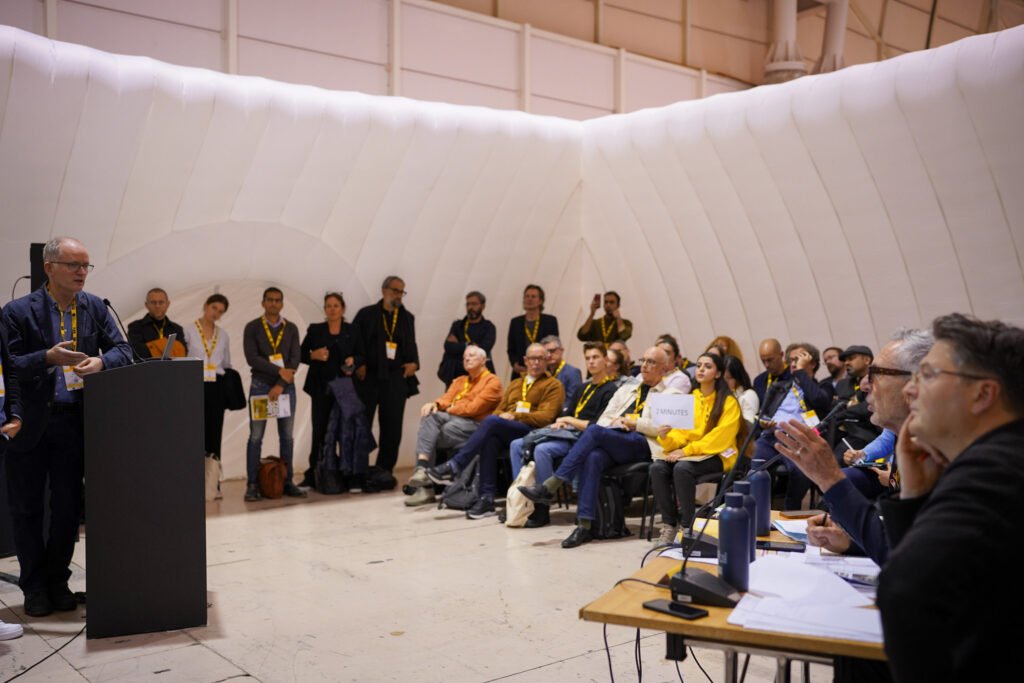

What is WAF’s stance on the proliferation and growing use of AI and other related technologies for architectural design? Will you be open to accepting entries that utilize these this year?
Well, that is a very interesting question. Because I suppose you ask yourself, well, who is going to enter? Because that is not going to be an AI operation. That is going to be a very human operation, somebody has got to organize it and pay for it.
But I think that work, which is supplemented by AI, I had not thought about this to any great extent, other than we have discussed technology generally and how much has changed since we launched 15 years ago. It is a bit like, if there are software programs that allow you to produce drawings in the style of Frank Gehry or Ludwig Mies van der Rohe, you know, should that be banned?
I am basically against banning anything because I do not think it makes any difference whether you have used AI to help you with your process. And the reason for that is that high-quality things will be the outcome of high-quality thinking. Because what I want to know is, well, who set the parameters and why. Who wrote the instructions? And why did they write them? And I can imagine a fascinating presentation, which would not be that far removed from, let us say, hearing somebody from Zaha Hadid’s office, explaining why the conceptual thinking was actually derived from a painting, etc… Personally, I think that is fantastic. And I am not worried about it…I even kind of relish it, because I think it opens wonderful possibilities for creativity.
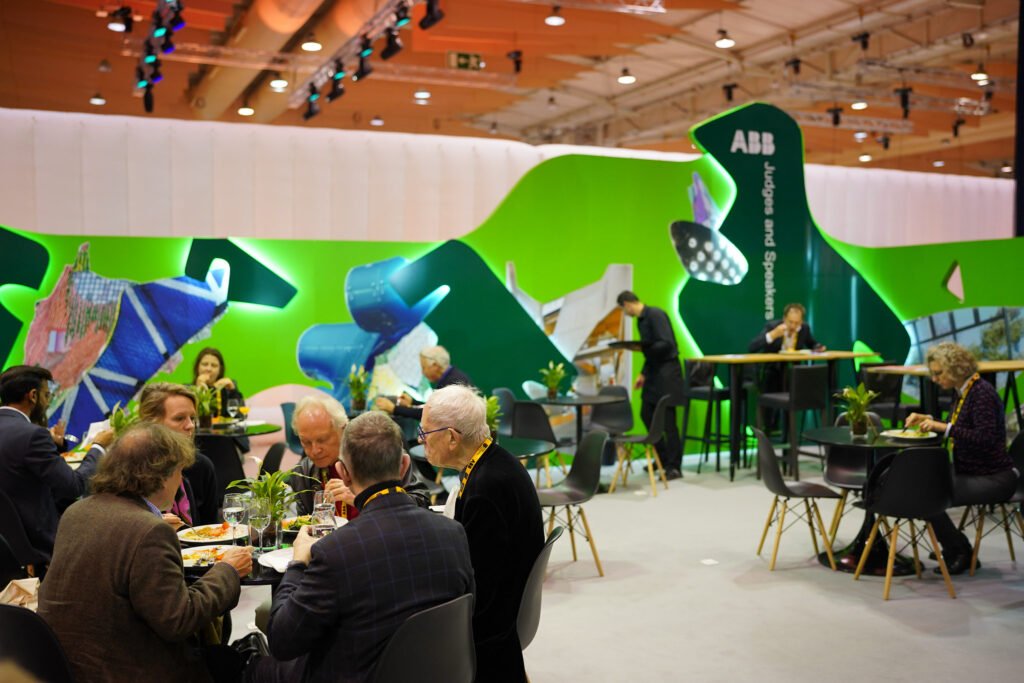

The ASEAN region is fertile ground for creative talent. How can competitions like the WAF support and help foster the continuing growth of the region’s creative output? Are there instances of how WAF has helped, for example, individual studios, or helped affect the public perception of a country’s architectural output?
Yeah, well, I can think of two examples. I think Vietnamese architects were not very well known before the World Architecture Festival. But because of the participation and successes of Vietnamese architects like Võ Trọng Nghĩa in the competition, their national profile was raised. It helped that a Vietnamese practice (a21 Studio for The Chapel) was able to nab the prestigious World Building of the Year plum. As far as ASEAN countries are concerned, we hope that the second period during which we will be in Singapore can stimulate more interest from the region, in particular, Indonesia, which we don’t get many entries from. We are hoping that our presence in this part of the world will also stimulate more interest from India.
I think we would share the example of China as well. When we started, there were not very many Chinese entries. But now, they constitute probably a third or more of the entries coming in. And what we have noticed is that the more entries we see, the higher the standards. So, this is not a case of more means worse. Our experience is that more means better.
I am sure you can find other stories of architects who have won a WAF category, or even a Best in Show award, that has actually been quite transformational for their practice because it’s allowed them to appear on a bigger stage. Not necessarily internationally, it may mean that they have bigger players locally. But to have especially one of the big awards on your architectural CV, I think, is no bad thing. And it has helped some artists, I mean, we’ve got stories, you know, there are the up-and-coming architects, or an architect from a big practice who’s done a one-off project privately, which has been the stimulus to him setting up his own practice on the back of a win at WAF…


Alright, so the Philippines had its highest number of entries last year, and national participation has been consistent ever since the first Filipino entrant Emmanuel Miñana broke into the shortlist in 2014. What are your thoughts on this, and why should more Pinoy practices join the WAF?
When we did our first online event, we had a couple of winners from the Philippines, especially on future projects, including a very ambitious proposal to create a huge new district of Manila in the bay. And I think the team all noticed this sudden rise; we were studying interest in the Philippines as we have not had many participants before.
There is definitely something going on in the Philippines; there’s obviously a generation coming through who kind of have a new way of doing things and are ambitious. And I think that’s sort of reflected in the kind of entries we have been getting in the Future category.
Sometimes countries go through a stage like that, right? Australia had this phase where they mostly found success in submitting brilliant houses. Now, they are doing brilliant stuff in other things as well. So, the Philippines, to me right now, is hot territory.
WAF offers countries and firms of all shapes and sizes an equal field and this is why I think it is an exciting opportunity for local firms to both showcase their craft and learn about how their peers do things in other places. We look forward to getting more interest from the Philippines. Long may this rejuvenated architectural spirit continue! •
#KantoWAF2023
As an official media partner of the World Architecture Festival 2023, we are happy to share a 10% discount on award entry/delegate rates via our discount code. Enter this code upon completion and before submitting your entry to avail of the discount: KANTO2310.
Deadline for entry submissions is on May 5, 2023.
The World Architecture Festival 2023 is set to gather rising and established industry practitioners from all over the world from 29 November to 1 December at the Marina Bay Sands in Singapore, Singapore.
Download a copy of our e-program for Kanto’s hybrid seminar with the United Architects of the Philippines,
“Becoming Globally-Competitive Filipino Architects” below:


Kanto.com.ph thanks GROHE (under LIXIL Philippines) for making this trip and interview possible.



2 Responses